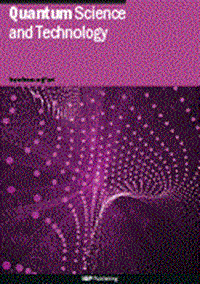多部量子系统的稳态相干性:与热力学量的联系及其对量子热机的影响
IF 5
2区 物理与天体物理
Q1 PHYSICS, MULTIDISCIPLINARY
引用次数: 0
摘要
理解量子系统的相干性如何影响热力学量,如功和热,对于在热量子技术中有效地利用量子是必不可少的。在这里,我们研究了多部系统中不同子系统之间的量子相干性对工作和热流的独特贡献,特别是在非平衡稳态中。我们的系统由两个耦合的系综组成,每个系综由N个粒子组成,分别与两个不同温度的槽相互作用。综上的粒子与它们的浴体同时或依次相互作用,导致非局部耗散,并使功和热流分解为局部和非局部分量。我们发现非局域热流以及局域和非局域工作电流都与系统的量子相干性有关。我们提供了相干相关量的显式表达式,确定了各种系统内相互作用下的工作电流。我们的方案是多功能的,可以作为冰箱,发动机和加速器,其性能对配置设置高度敏感。这些发现建立了热力学量和量子相干性之间的联系,为量子热机的设计提供了有价值的见解。本文章由计算机程序翻译,如有差异,请以英文原文为准。
Steady-state coherence in multipartite quantum systems: its connection with thermodynamic quantities and impact on quantum thermal machines
Understanding how coherence of quantum systems affects thermodynamic quantities, such as work and heat, is essential for harnessing quantumness effectively in thermal quantum technologies. Here, we study the unique contributions of quantum coherence among different subsystems of a multipartite system, specifically in non-equilibrium steady states, to work and heat currents. Our system comprises two coupled ensembles, each consisting of N particles, interacting with two baths of different temperatures, respectively. The particles in an ensemble interact with their bath either simultaneously or sequentially, leading to non-local dissipation and enabling the decomposition of work and heat currents into local and non-local components. We find that the non-local heat current, as well as both the local and non-local work currents, are linked to the system quantum coherence. We provide explicit expressions of coherence-related quantities that determine the work currents under various intrasystem interactions. Our scheme is versatile, capable of functioning as a refrigerator, an engine, and an accelerator, with its performance being highly sensitive to the configuration settings. These findings establish a connection between thermodynamic quantities and quantum coherence, supplying valuable insights for the design of quantum thermal machines.
求助全文
通过发布文献求助,成功后即可免费获取论文全文。
去求助
来源期刊

Quantum Science and Technology
Materials Science-Materials Science (miscellaneous)
CiteScore
11.20
自引率
3.00%
发文量
133
期刊介绍:
Driven by advances in technology and experimental capability, the last decade has seen the emergence of quantum technology: a new praxis for controlling the quantum world. It is now possible to engineer complex, multi-component systems that merge the once distinct fields of quantum optics and condensed matter physics.
Quantum Science and Technology is a new multidisciplinary, electronic-only journal, devoted to publishing research of the highest quality and impact covering theoretical and experimental advances in the fundamental science and application of all quantum-enabled technologies.
 求助内容:
求助内容: 应助结果提醒方式:
应助结果提醒方式:


